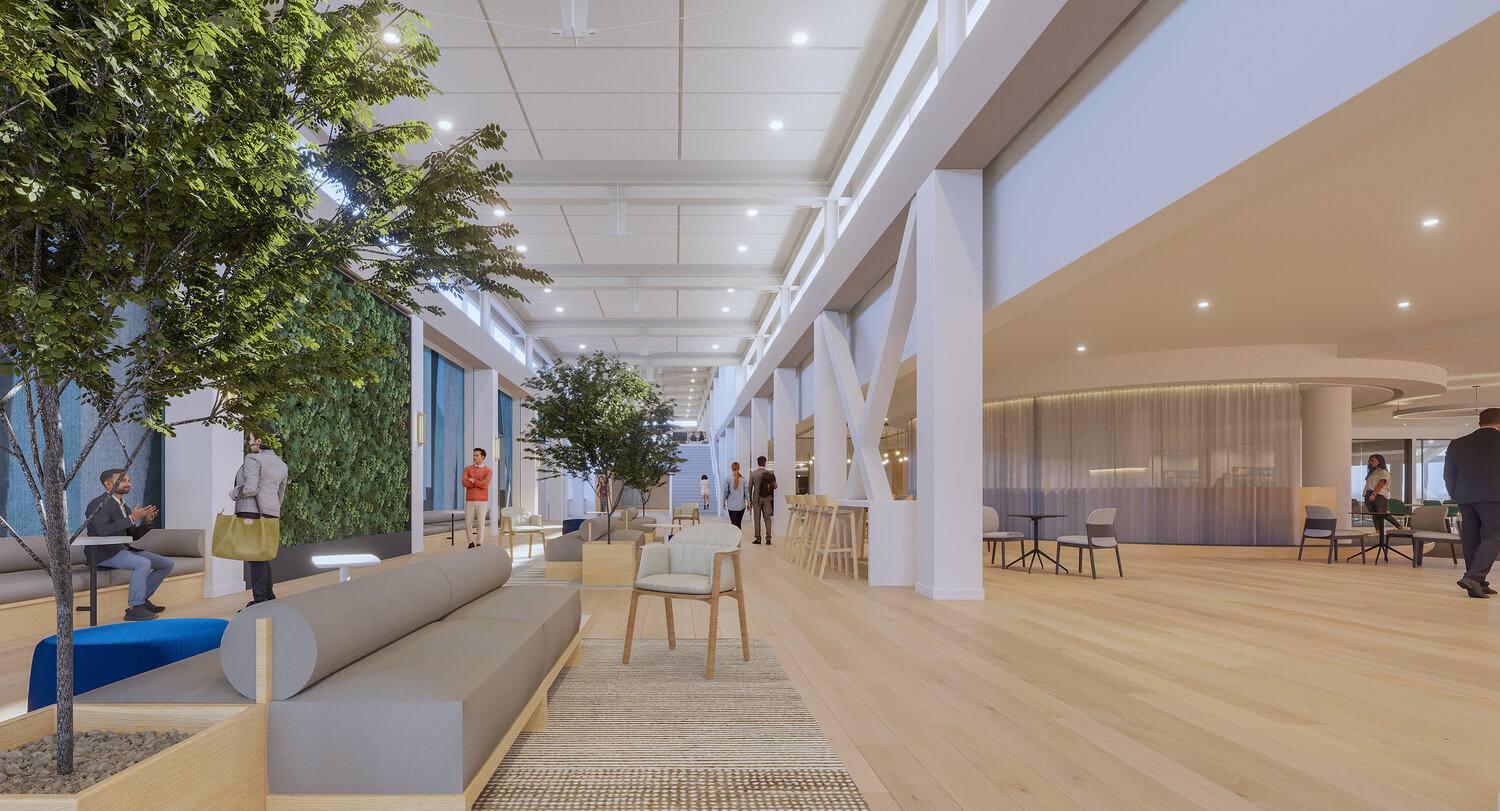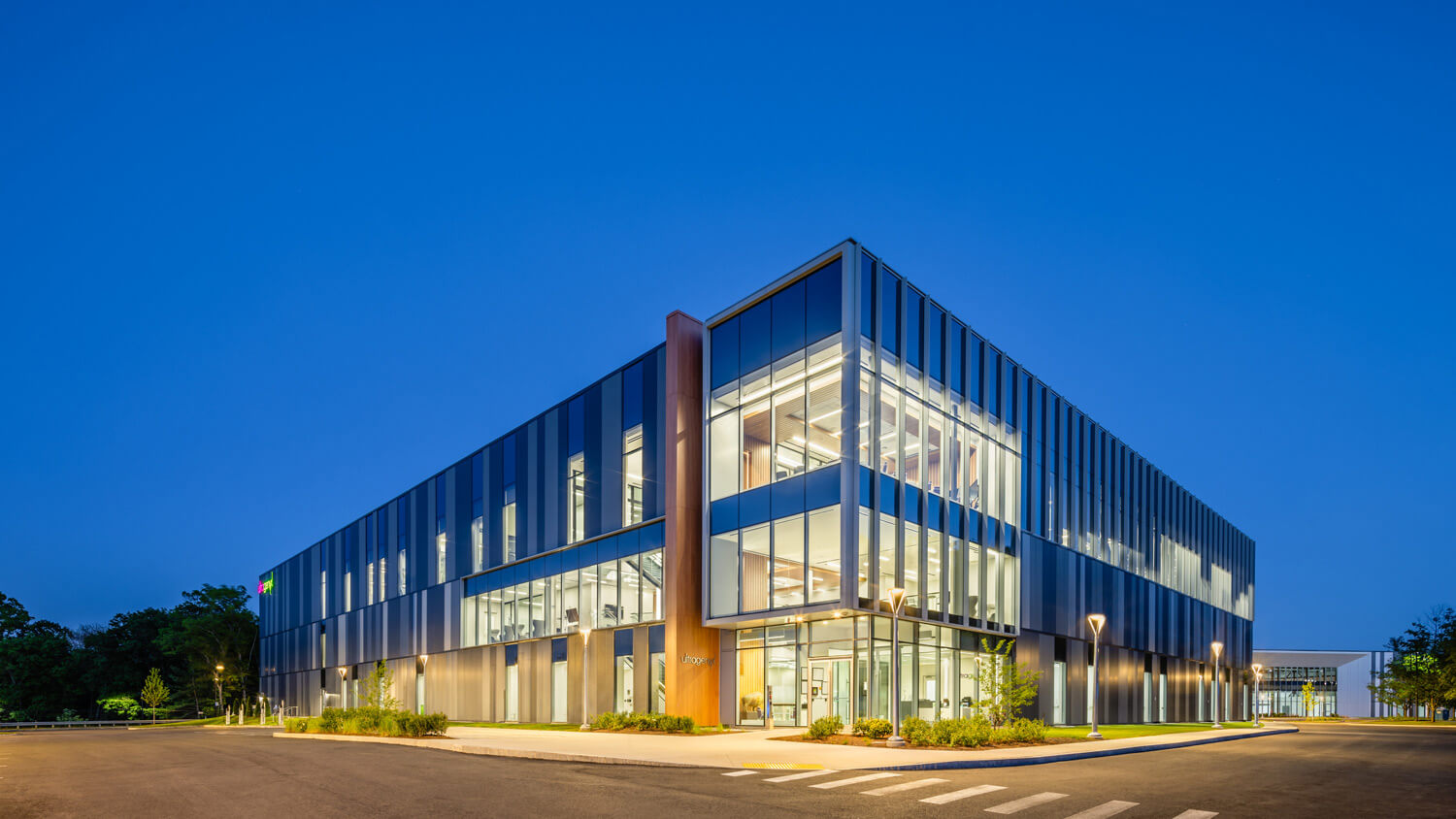
A drug development company occupies the first building.
The new 100,000 square feet built-to-suit GMP facility includes manufacturing spaces, R&D labs, offices, and worker amenities.
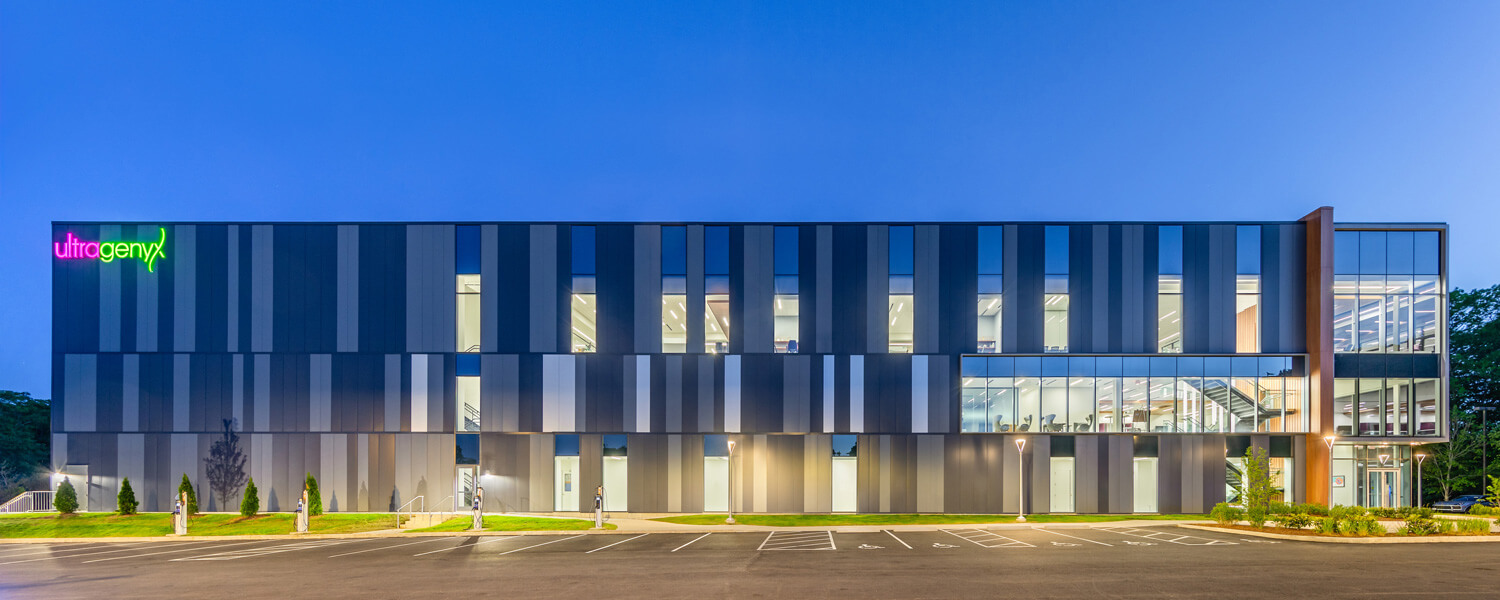
The complex demands of cGMP buildings called for careful space planning.
By prioritizing the flow of materials, the design allows the tenant to produce its drugs at scale. The building’s loading docks, storage areas, and processing spaces are laid out to enable a seamless manufacturing process: Raw materials are unloaded, stored, processed, and delivered, with waste stored (and removed) separately.
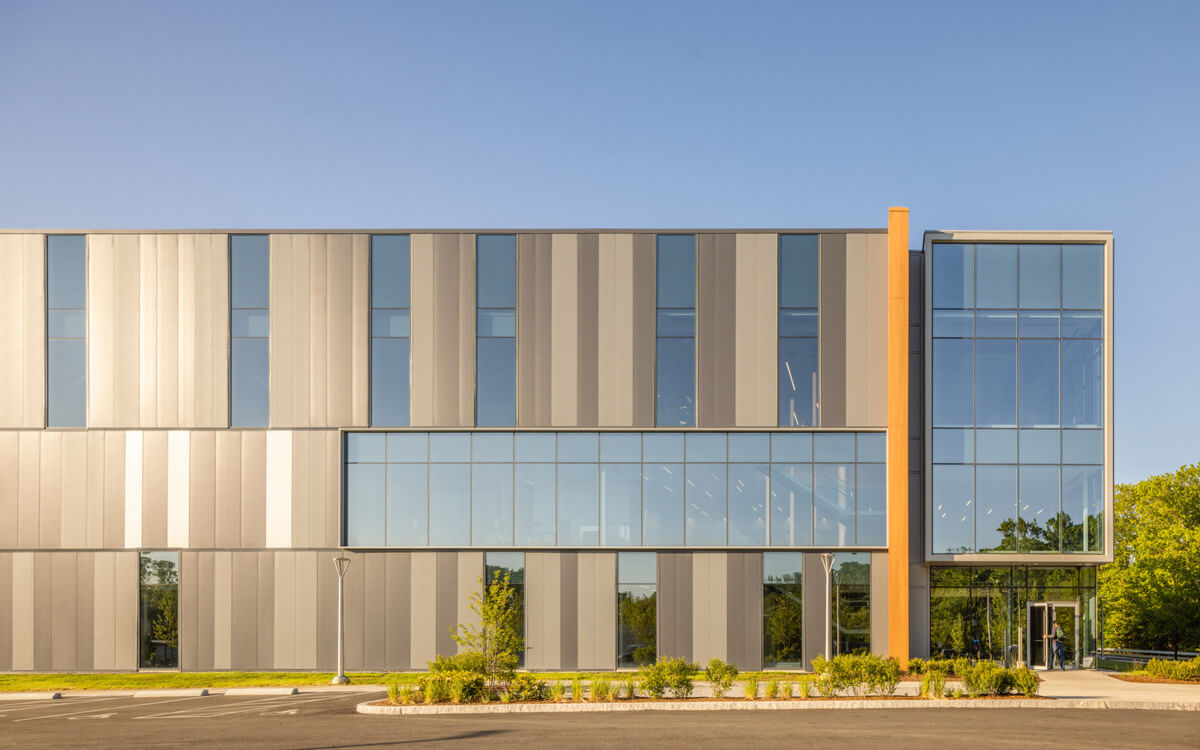

The design also ensures a strict separation of public and private spaces appropriate for sensitive cGMP work. Employees may use a separate entrance from visitors, while the research labs and manufacturing bays are securely separated from office space and amenities.
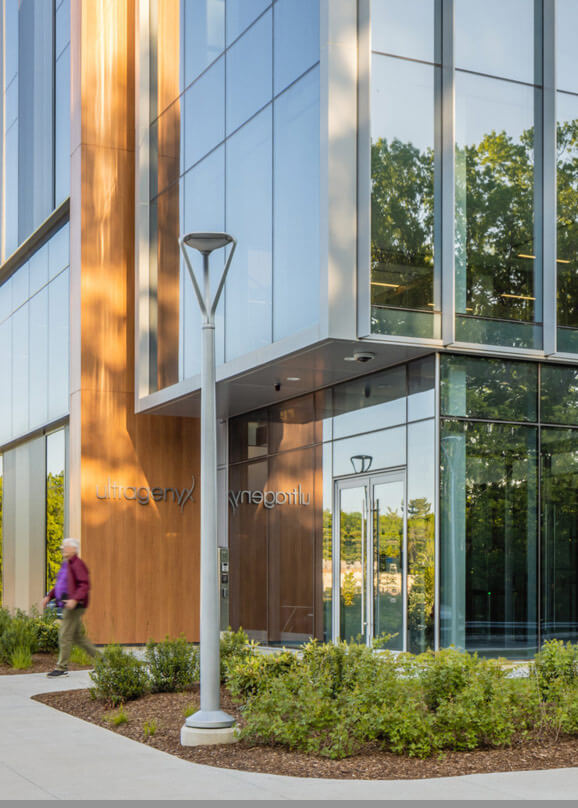
cGMP fit-ups require significant coordination of systems.
SMMA worked closely with the tenant’s interior design and MEP consultants to ensure the core and shell design facilitated the interior program.
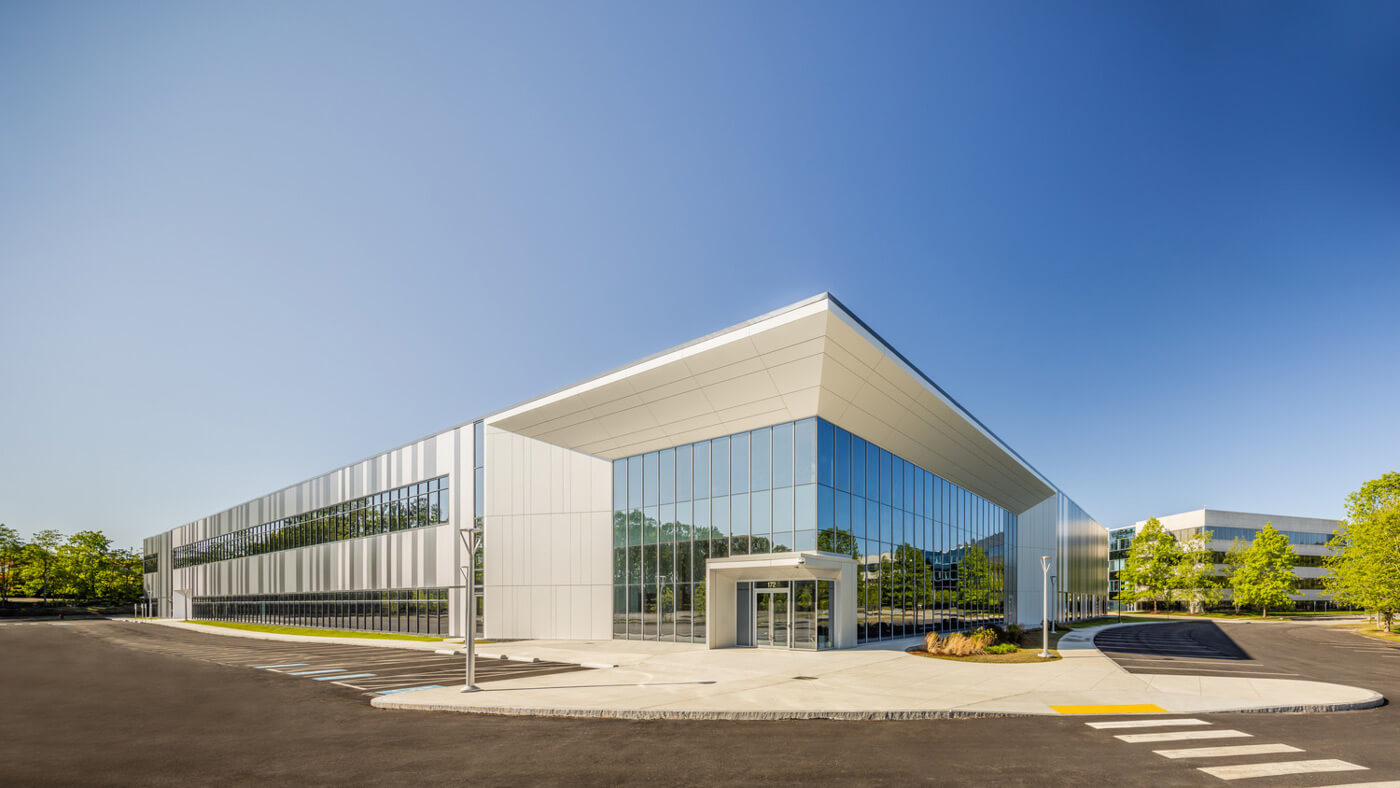
172 Middlesex Turnpike is a 140,000-sf cGMP bio-manufacturing facility that includes manufacturing, R&D lab, and office spaces.

For both projects, SMMA had to lay out a bigger program within pre-approved permits.
This meant accommodating far larger building footprints within the constraints of existing permits and master plans, which were originally intended for smaller office buildings. A solution was found by optimizing the building layout, parking, circulation, and stormwater management, as well as leveraging pre-existing stormwater infrastructure.
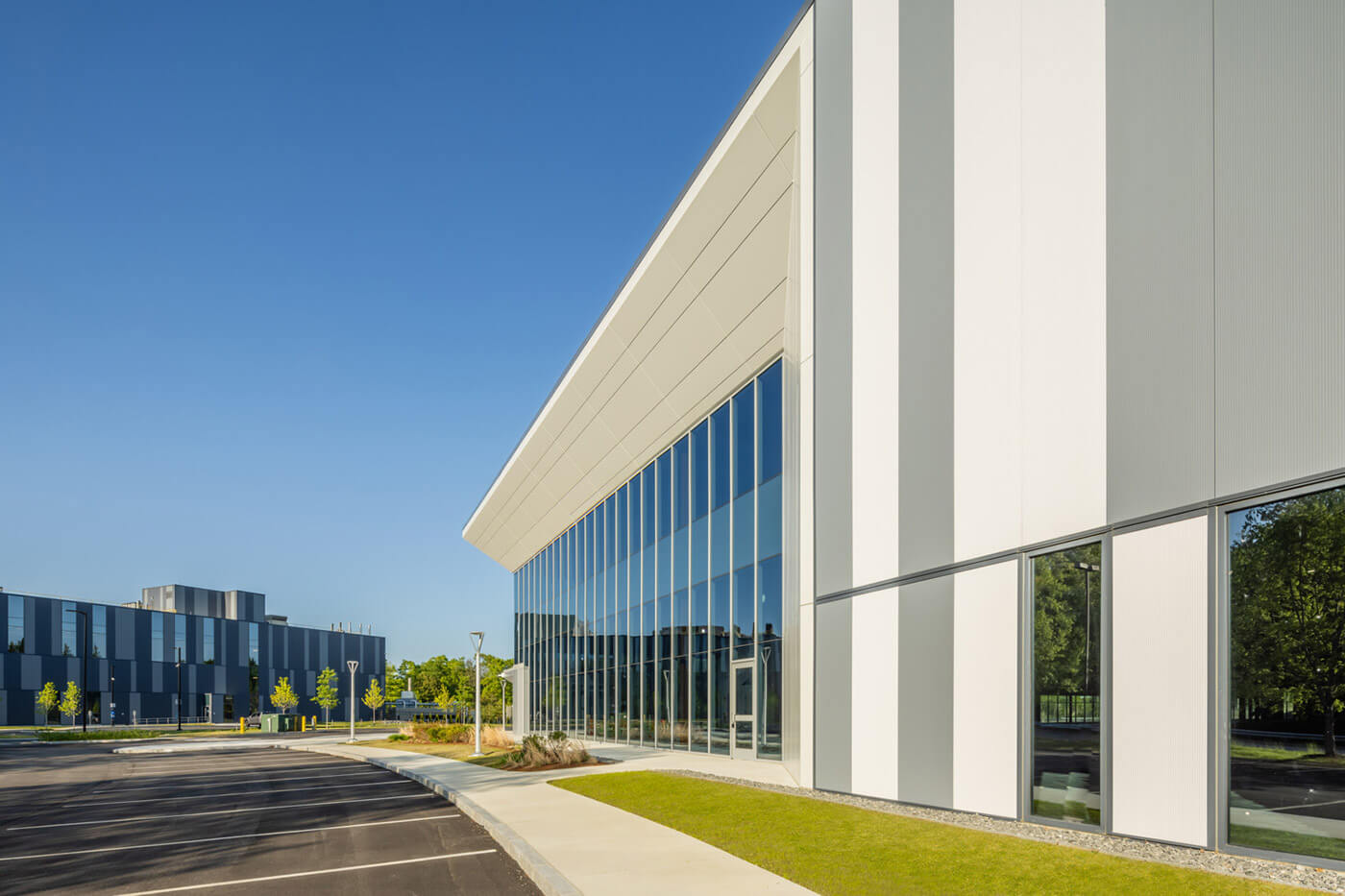
Both 170 and 172 posed unique stormwater challenges. The infrastructure and detention basins for the development had been constructed with drainage pipe stubs left for future development.
Stormwater Systems
|The team designed the stormwater systems to match previously approved detention and treatment requirements. The design meets an updated set of treatment and low impact development (LID) best management practices (BMPs) adopted that have been adopted by the Town of Bedford since the original basin construction.
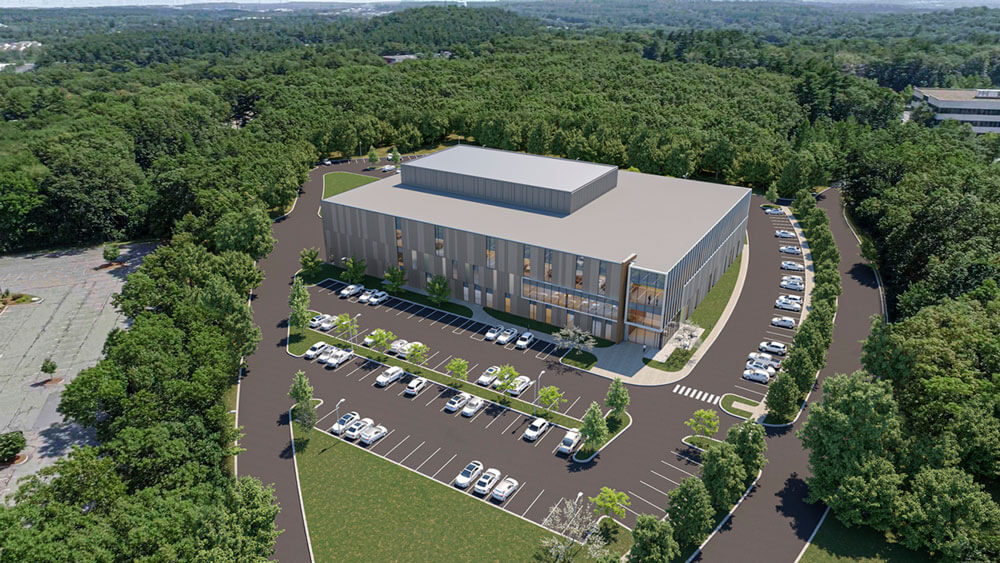
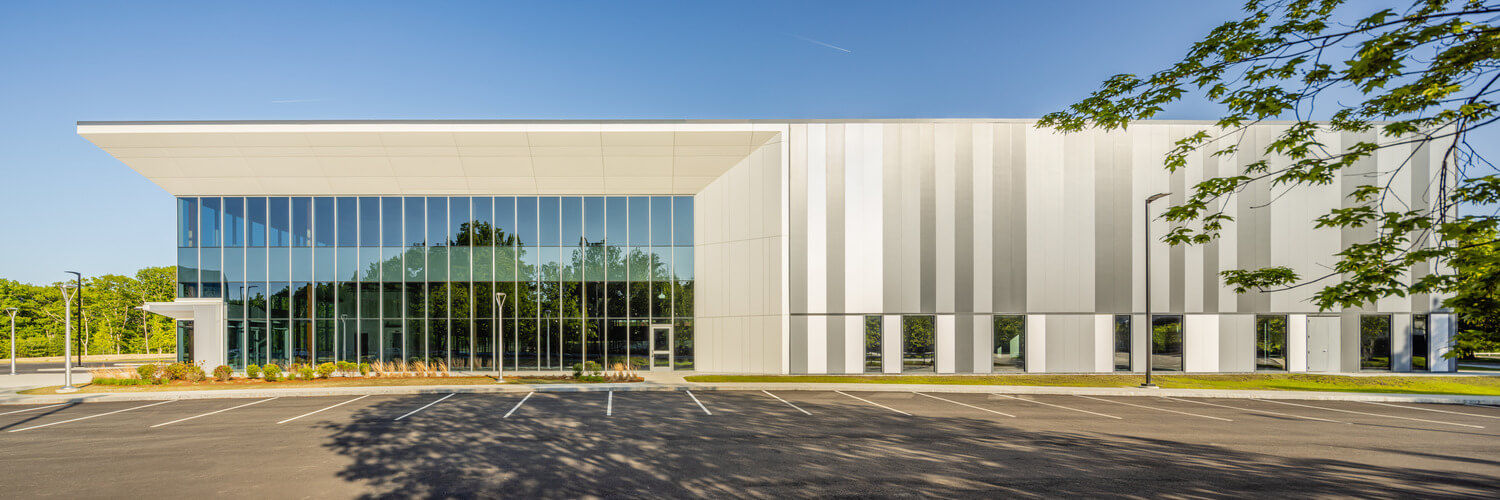
Both buildings boast an airtight, well-insulated envelope.
The designs use thermal bridging techniques, minimal glazing, and an insulated wall panel system with simple materials. This combination makes for a robust energy performance on a modest budget, as well as a contaminant-free environment suited to drug manufacturing as required by FDA regulations.
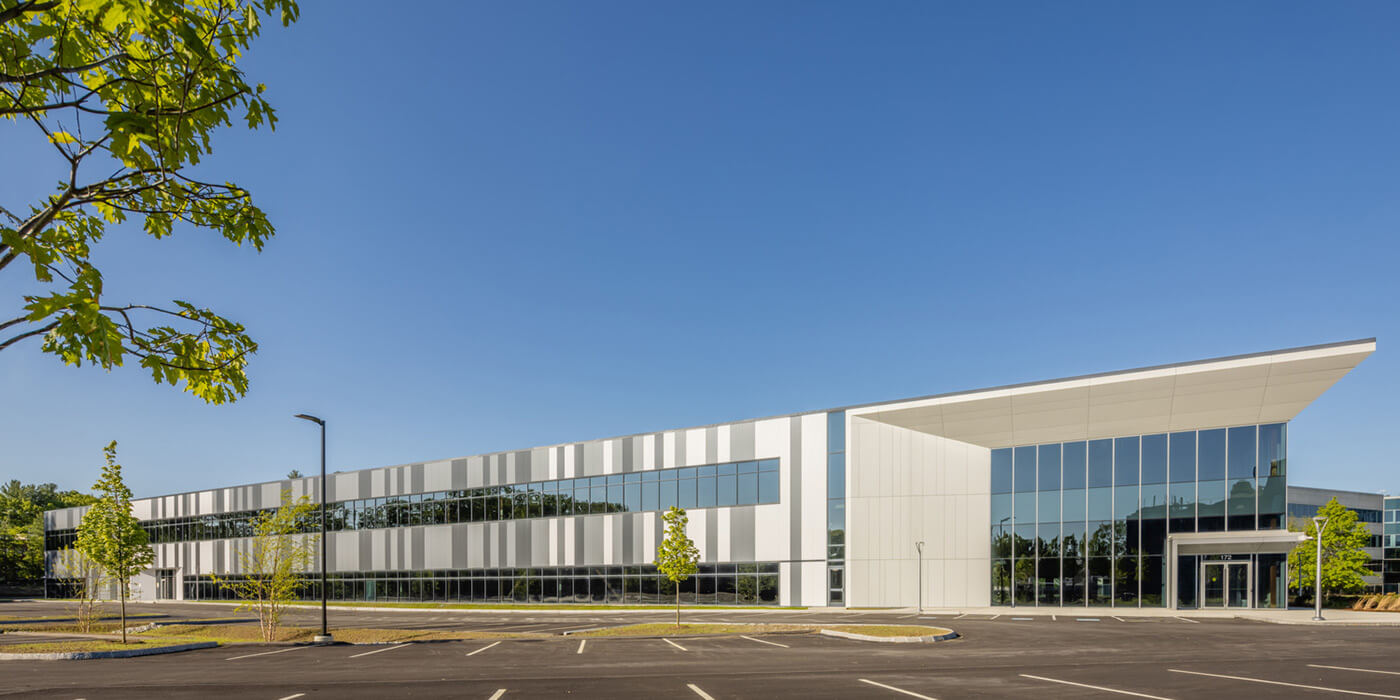
These flexible designs can be adapted for other uses.
To get ahead of future market trends, Gutierrez needed their new buildings to be reconfigurable. Both buildings are designed to be converted to a warehouse or an office if the Life Science market should experience a downturn.
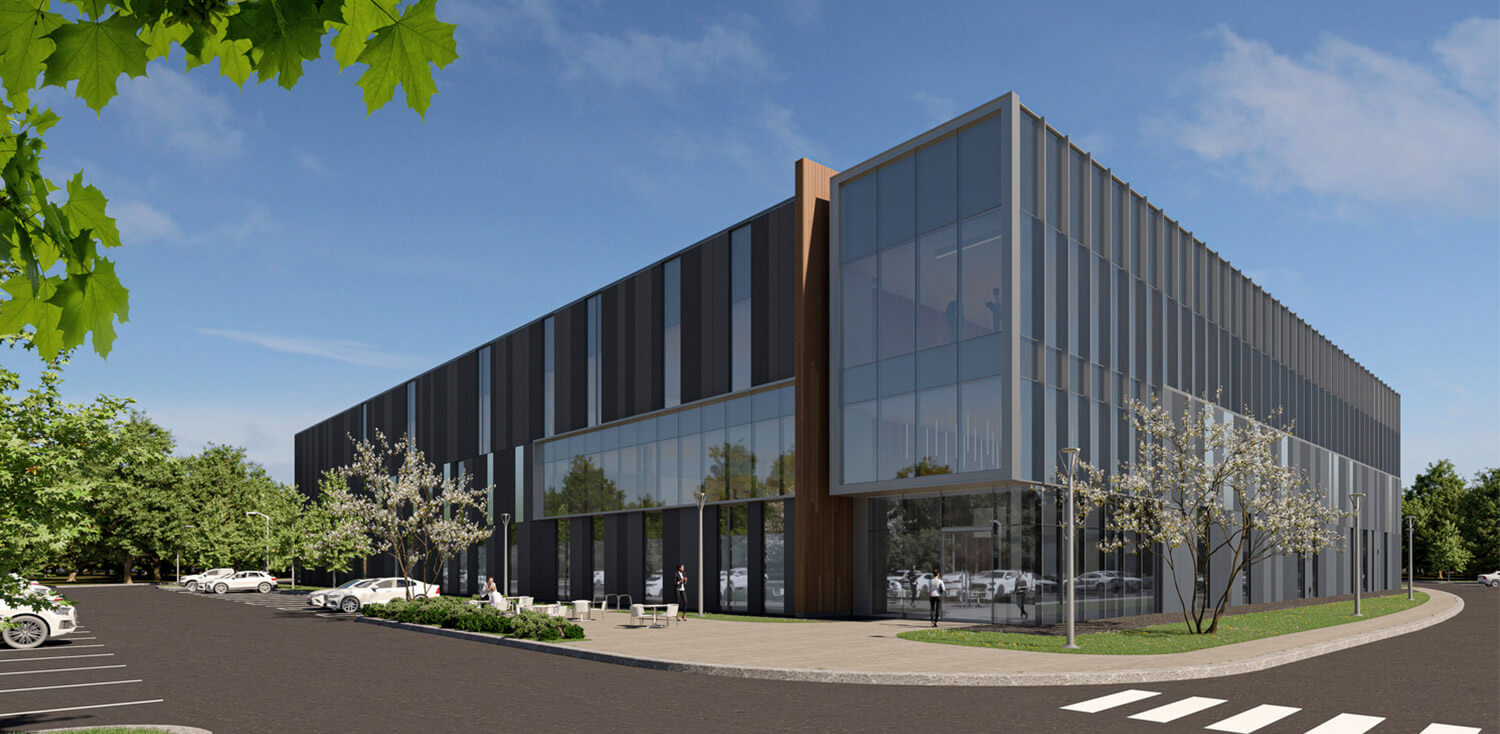
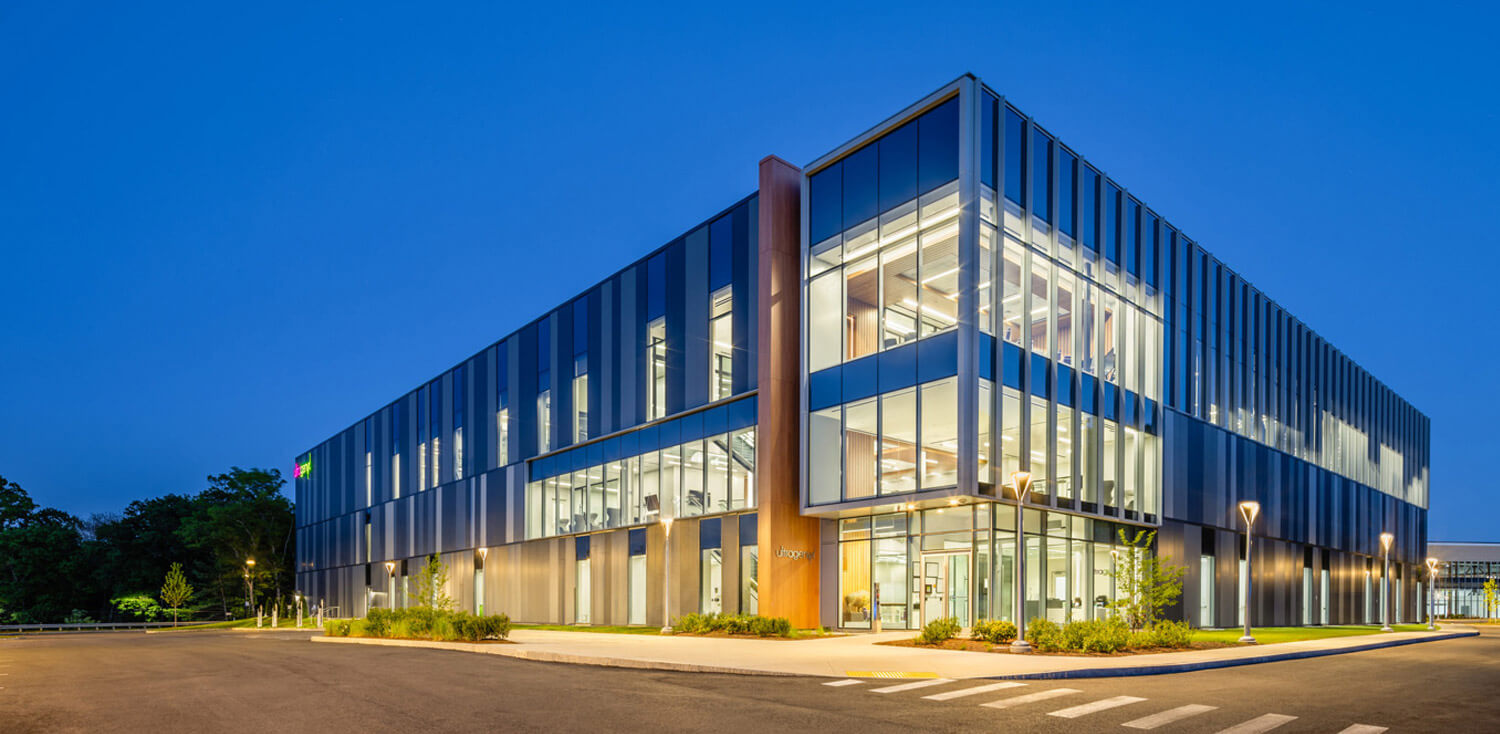
170 Middlesex Turnpike
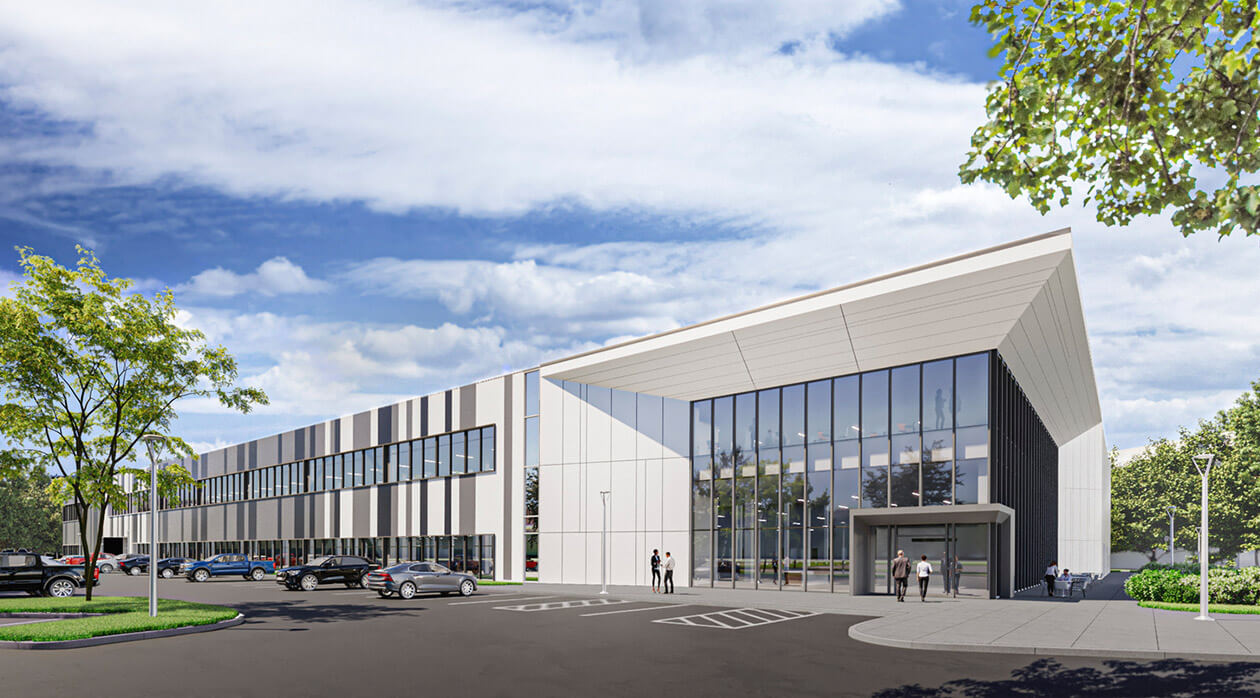
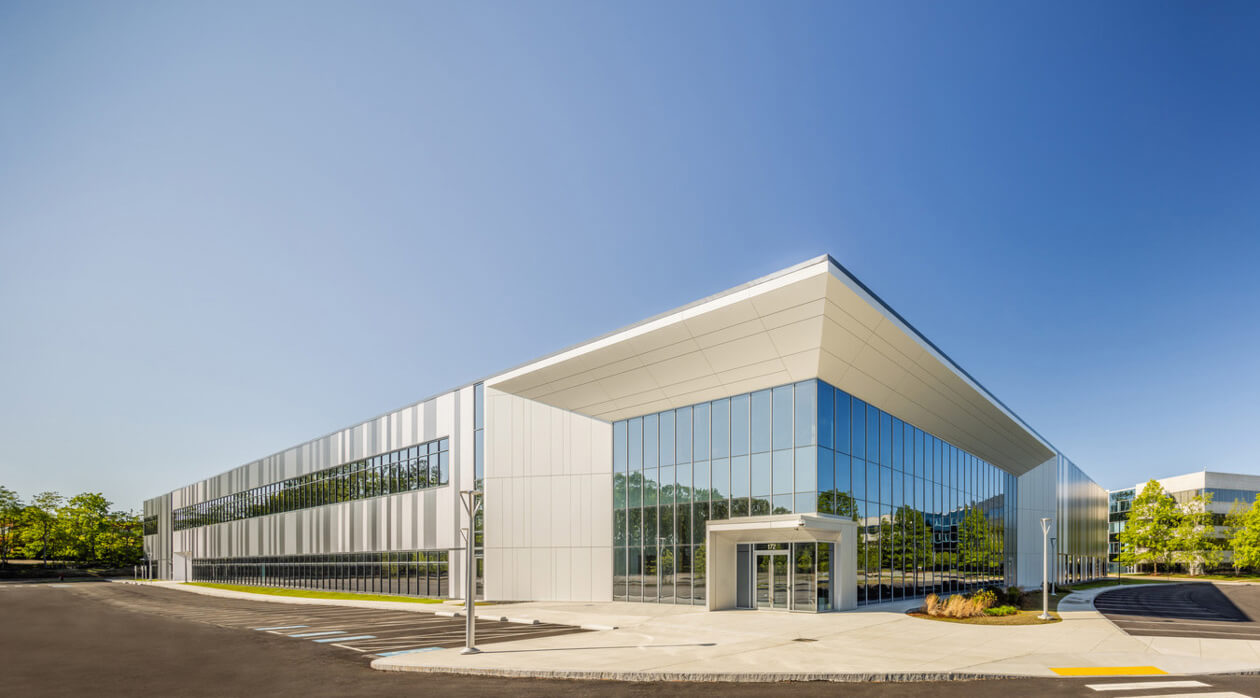
172 Middlesex Turnpike
